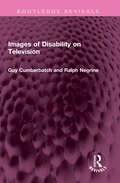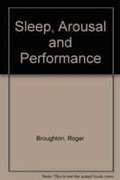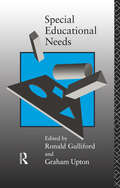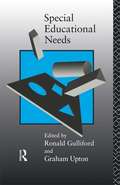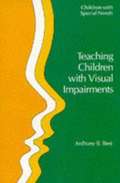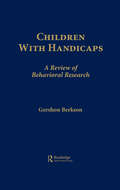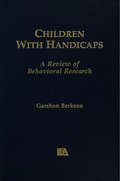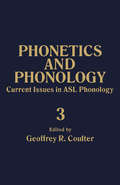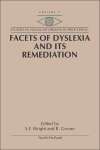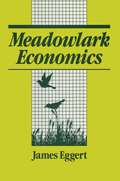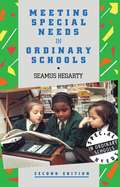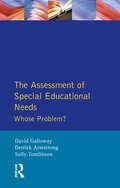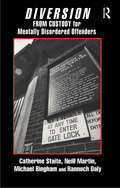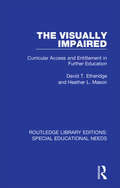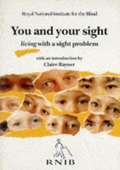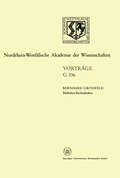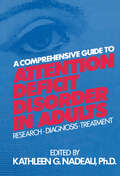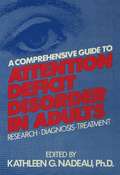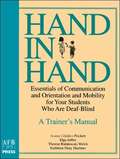- Table View
- List View
Images of Disability on Television (Routledge Revivals)
by Guy Cumberbatch Ralph NegrineFirst published in 1992, Images of Disability on Television examines the frequency and nature of disability on British and American television and how it is perceived and presented by programme makers. Attitudes held by those closest to the issues – disabled people, their carers, and television producers and writers – are presented as the result of interviews and discussions. There is an increasingly strong sentiment that television has got it wrong as far as disability is concerned and does not play its proper role in allowing the non-disabled to understand fully the world of disabled people. This book provides information to promote greater understanding of the needs of the disabled people in television portrayal and opens up possibilities for a change in attitudes. It will be valuable reading for students, researchers and lecturers in the social sciences, communication studies, and media studies.
Sleep, Arousal, and Performance: a Tribute to Bob Wilkinson (PDF)
by Robert T Wilkinson Roger J Broughton Robert D OgilvieA scientific exploration of the quaint old notion that people's productivity and health are related to whether or not they got a good night's sleep. The 19 papers, from a May 1990 conference in Cambridge (marking the retirement of a pioneer researcher in the field) consider theoretical issues; physiology and information processing; performance, sleep deprivation, and mapping; clinical applications; and a synthesis. Most of the contributors are from psychology. (c) by Book News, Inc. , Portland, OR.
Special Educational Needs
by Ronald Gulliford Graham UptonThe contributors focus on particular areas of special educational need, arguing that effective educational provision can be enhanced with reference to the particular problems experienced by children. Set in the context of a generic understanding of special education, this timely book addresses commonly-raised questions: what is the condition and how can I recognise it? why does it occur? what sort of educational, personal, and social consequences are there associated with it? are there any specialist skills and resources which I should know about? what are the implications for educational provision, teacher support, curricular access, assessment and classroom management? This popular book has been fully revised to provide a comprehensive overview of special needs provision. A such it is the key text on special needs in the '90s.
Special Educational Needs
by Ronald Gulliford Graham UptonThe contributors focus on particular areas of special educational need, arguing that effective educational provision can be enhanced with reference to the particular problems experienced by children. Set in the context of a generic understanding of special education, this timely book addresses commonly-raised questions: what is the condition and how can I recognise it? why does it occur? what sort of educational, personal, and social consequences are there associated with it? are there any specialist skills and resources which I should know about? what are the implications for educational provision, teacher support, curricular access, assessment and classroom management? This popular book has been fully revised to provide a comprehensive overview of special needs provision. A such it is the key text on special needs in the '90s.
Teaching Children With Visual Impairments (PDF)
by Tony BestA guide for teachers and parents. Discusses the range and definitions of visual impairment, its population and history, educational services, the teaching and learning environment, and other topics. Presents many case studies. Distributed by Taylor & Francis. Annotation(c) 2003 Book News, Inc. , Portland, OR (booknews. com)
Children With Handicaps: A Review of Behavioral Research
by Gershon BerksonPsychological research on children with mental and physical handicaps began two hundred years ago. Its major development awaited the maturation of psychology as an empirical science and of social movements for child welfare and education. This book is a record of the research accomplished in the 1980s. While at the end of the 19th century, behavioral research on handicapped children could at best be characterized as pioneering; by the beginning of the 1990s, it had become a vigorous activity with scientists producing hundreds of articles a year. The result has been a level of detail in theory and factual support that was not previously available. This volume is written for those who know something about psychology and education, but who are unfamiliar with research on children with handicaps. This might include parents of children with handicaps, upper-level undergraduate and graduate students looking for research topics, and professionals in developmental psychology and the education of normal children who wish to familiarize themselves with the recent developments in the study of deviations in behavioral development.
Children With Handicaps: A Review of Behavioral Research
by Gershon BerksonPsychological research on children with mental and physical handicaps began two hundred years ago. Its major development awaited the maturation of psychology as an empirical science and of social movements for child welfare and education. This book is a record of the research accomplished in the 1980s. While at the end of the 19th century, behavioral research on handicapped children could at best be characterized as pioneering; by the beginning of the 1990s, it had become a vigorous activity with scientists producing hundreds of articles a year. The result has been a level of detail in theory and factual support that was not previously available. This volume is written for those who know something about psychology and education, but who are unfamiliar with research on children with handicaps. This might include parents of children with handicaps, upper-level undergraduate and graduate students looking for research topics, and professionals in developmental psychology and the education of normal children who wish to familiarize themselves with the recent developments in the study of deviations in behavioral development.
Current Issues in ASL Phonology: Phonetics and Phonology, Vol. 3
by Geoffrey R. CoulterPhonetics and Phonology, Volume 3: Current Issues in ASL Phonology deals with theoretical issues in the phonology of ASL (American Sign Language), the signed language of the American Deaf. These issues range from the overall architecture of phonological theory to particular proposals such as the nature of syllables and the reality of underlying "dynamic" or "contour" elements. The seemingly universal preference, CV (consonant-vowel) as opposed to VC (vowel-consonant) syllable structure, is also discussed.Comprised of 14 chapters, this volume begins with some general background on ASL and on the community in which it is used. It then looks at secondary licensing and the nature of constraints on the non-dominant hand in ASL; underspecification in ASL handshape contours; and the nature of ASL and the development of ASL linguistics. The applicability of the notion of "phonology" to a signed language and the sort of questions that can be explored about the parallelisms between signed and spoken linguistic systems are also considered. Later chapters focus on the linearization of phonological tiers in ASL; phonological segmentation in sign and speech; two models of segmentation in ASL; and sonority and syllable structure in ASL. The book also examines phrase-level prosody in ASL before concluding with an analysis of linguistic expression and its relation to modality. This monograph will appeal to phonologists who work on both signed and spoken languages, and to other cognitive scientists interested in the nature of abstract articulatory representations in human language.
Facets of Dyslexia and its Remediation (ISSN #Volume 3)
by R. Groner S. F WrightDevelopmental Dyslexia has been a subject of interest to practitioners for more than a century. Despite its long research history, however, dyslexia (the terms specific reading disability, reading disability and learning disability are also used interchangeably in this volume) still provides a challenge for contemporary cognitive psychology, education, neurology and physiology. By bringing together contributions from researchers and scholars working in a wide range of fields and perspectives, it is hoped that this publication will offer a means of considering different facets of dyslexia, and enable a greater understanding of reading disorders and their remediation to emerge.The book is divided into eight major sections, the focus in each section being on a different facet of dyslexia. It is hoped this framework enables the reader to assimilate the wide range of pure and applied research and even give rise to a new perspective for the understanding of dyslexia.
Meadowlark Economies: Work and Leisure in the Ecosystem
by Jim EggertFirst Published in 2017. The author shares their feelings about enjoying and preserving the natural environment, yet this book also reveals a conflict in values that the most committed ecologist must face. Such conflict pits the powerful American values of individual freedom and rights against the values of community necessary for sustaining the environment. In publishing this collection of essays, the author hopes to contribute to more enlightened economic analysis and more relevant and effective policies that are good for both the economy and the global ecology.
Meadowlark Economies: Work and Leisure in the Ecosystem
by Jim EggertFirst Published in 2017. The author shares their feelings about enjoying and preserving the natural environment, yet this book also reveals a conflict in values that the most committed ecologist must face. Such conflict pits the powerful American values of individual freedom and rights against the values of community necessary for sustaining the environment. In publishing this collection of essays, the author hopes to contribute to more enlightened economic analysis and more relevant and effective policies that are good for both the economy and the global ecology.
Meeting Special Needs in Ordinary Schools: An Overview
by Seamus HegartyHow can ordinary schools cope with pupils with special needs? What must they do to move beyond the rhetoric of the integration to effective practical action? Seamus Hegarty aims to provide a comprehensive overview of the key issues in the UK. The National Curriculum, local management of schools, changes in teacher training, the role of parents - are discussed and related to day-to-day realities.
The Assessment of Special Educational Needs: Whose Problem?
by David M Galloway Derrick Armstrong Sally TomlinsonThe debate about special needs provision has increased dramatically over the last 15 years, however, despite the widespread concern over both learning and behavioural difficulties, there have been few attempts to analyse in detail the process of assessment by which children are being identified as having special educational needs. Drawing upon research carried out by the authors, this book fills that gap by examining the process in detail. It considers the assessment process itself and how it affects and is affected by other areas of school policy - in some cases causing tension and conflict such as parental participation, the use and allocation of resources and multi-professional decision-making. A feature of the book is its analysis of the impact of the National Curriculum and the local management of schools (LMS) provision for special needs.
The Assessment of Special Educational Needs: Whose Problem?
by David M Galloway Derrick Armstrong Sally TomlinsonThe debate about special needs provision has increased dramatically over the last 15 years, however, despite the widespread concern over both learning and behavioural difficulties, there have been few attempts to analyse in detail the process of assessment by which children are being identified as having special educational needs. Drawing upon research carried out by the authors, this book fills that gap by examining the process in detail. It considers the assessment process itself and how it affects and is affected by other areas of school policy - in some cases causing tension and conflict such as parental participation, the use and allocation of resources and multi-professional decision-making. A feature of the book is its analysis of the impact of the National Curriculum and the local management of schools (LMS) provision for special needs.
Diversion from Custody for Mentally Disordered Offenders
by Catherine Staite Neill Martin Rannoch DalyThe authors aim to provide practical guidance to enable practitioners in the various criminal justice, health and social care agencies to divert mentally disordered offenders from prosecution and custody and to help prevent re-offending.
Diversion from Custody for Mentally Disordered Offenders
by Catherine Staite Neill Martin Rannoch DalyThe authors aim to provide practical guidance to enable practitioners in the various criminal justice, health and social care agencies to divert mentally disordered offenders from prosecution and custody and to help prevent re-offending.
The Visually Impaired
by David T. Etheridge Heather L. MasonFirst published in 1994. The chapters that make up this book are not primarily about disability or visual impairment. What they do address is the right of all people to have further education and training made available in ways that meet their needs regardless of gender, race, age and ability. This book examines their entitlement to this education and some of the ways in which it can be made accessible. The issues raised are relevant to all people entering further education and training.
The Visually Impaired (PDF)
by David T. Etheridge Heather L. MasonFirst published in 1994. The chapters that make up this book are not primarily about disability or visual impairment. What they do address is the right of all people to have further education and training made available in ways that meet their needs regardless of gender, race, age and ability. This book examines their entitlement to this education and some of the ways in which it can be made accessible. The issues raised are relevant to all people entering further education and training.
You and your sight: Living with a sight problem (PDF)
by Hilary Todd Francesca WolfThis volume is intended for anyone coming to terms with a serious sight problem. More than one person in 60 in the UK has severe sight loss and research shows that many do not know where to turn for help. This booklet gives practical advice and information on many of the questions that sight loss poses. Written in an easy-to-read question and answer format, issues covered include: understanding your sight problem; money matters; coping day by day; housing; keeping up your reading and other interests; jobs and training; and help for parents, children and young people.
Bildhaftes Rechtsdenken: Recht als bejahte Ordnung (Nordrhein-Westfälische Akademie der Wissenschaften #336)
by Bernhard GroßfeldA Comprehensive Guide To Attention Deficit Disorder In Adults: Research, Diagnosis and Treatment
by Kathleen G. NadeauThis groundbreaking volume, written by pioneering clinicians and researchers firmly convinced of the neurobiological underpinnings of ADD in adults, is the first to provide broad coverage of this burgeoning field. Written for professionals who diagnose and treat adults with ADD, it provides information from psychologists and physicians on the most current research and treatment issues regarding our understanding of ADD as a neurobiological disorder. According to the contributors, ADD in adults may be responsible for difficulties ranging from minor attention, memory, and organization problems in well-functioning adults to drug abuse and criminal behavior. A Comprehensive Guide to Attention Deficit Disorder in Adults begins by addressing the history of ADD and the evolution of our understanding of the disorder. The neurobiology of ADD is examined, laying a solid foundation for the clinician to develop a scientific understanding of this complex syndrome. The assessment and differential diagnosis of ADD is explored from the perspectives of a variety of specialists in the field. This includes an exploration of the interrelationships between attention deficit disorder and other neurodevelopmental disabilities that may interact with ADD to affect cognitive functioning, and an examination of the connections between ADD and a host of psychiatric conditions. Also covered is the process of differential diagnosis from a neurological perspective, which will help the non-medically trained clinician better to determine when a complete neurological evaluation seems warranted in the assessment process. Authors examine ADD with and without hyperactivity and describe a wide range of assessment tools that can be useful in developing a full diagnostic picture of different conditions that must be addressed in treating adults with the disorder. A wealth of experience, highly practical suggestions, and an optimistic outlook are the hallmark of the section on treatment. The authors strongly recommend a multifaceted treatment plan combining medication, psychotherapy, and addressing the pervasive self-esteem issues which typically haunt the adult whose condition has gone untreated. Specific treatment issues for Adults with ADD are also discussed. These include:- * the development of practical life management skills * the difficulties in relationships * ADD within the context of marriage and family * and higher education and the workplace. The volume concludes with a discussion of the legal implications of the diagnosis of ADD in adults as it pertains to education and employment, the important role of support groups for adults with ADD, and a thought-provoking examination of current and future research including the need for increased public recognition of ADD in adults. A Comprehensive Guide to Attention Deficit Disorder in Adults is a pioneering volume that will bring the most current information available to the attention of those able to help adult ADD sufferers...vocation and rehabilitation counselors, and numerous psychotherapists who recognize symptoms of depression and anxiety, but perhaps overlook the underlying attention deficit disorder. It will stimulate the interdisciplinary research that is the key to increasing knowledge and educate those who can truly make a difference.
A Comprehensive Guide To Attention Deficit Disorder In Adults: Research, Diagnosis and Treatment
by Kathleen G. NadeauThis groundbreaking volume, written by pioneering clinicians and researchers firmly convinced of the neurobiological underpinnings of ADD in adults, is the first to provide broad coverage of this burgeoning field. Written for professionals who diagnose and treat adults with ADD, it provides information from psychologists and physicians on the most current research and treatment issues regarding our understanding of ADD as a neurobiological disorder. According to the contributors, ADD in adults may be responsible for difficulties ranging from minor attention, memory, and organization problems in well-functioning adults to drug abuse and criminal behavior. A Comprehensive Guide to Attention Deficit Disorder in Adults begins by addressing the history of ADD and the evolution of our understanding of the disorder. The neurobiology of ADD is examined, laying a solid foundation for the clinician to develop a scientific understanding of this complex syndrome. The assessment and differential diagnosis of ADD is explored from the perspectives of a variety of specialists in the field. This includes an exploration of the interrelationships between attention deficit disorder and other neurodevelopmental disabilities that may interact with ADD to affect cognitive functioning, and an examination of the connections between ADD and a host of psychiatric conditions. Also covered is the process of differential diagnosis from a neurological perspective, which will help the non-medically trained clinician better to determine when a complete neurological evaluation seems warranted in the assessment process. Authors examine ADD with and without hyperactivity and describe a wide range of assessment tools that can be useful in developing a full diagnostic picture of different conditions that must be addressed in treating adults with the disorder. A wealth of experience, highly practical suggestions, and an optimistic outlook are the hallmark of the section on treatment. The authors strongly recommend a multifaceted treatment plan combining medication, psychotherapy, and addressing the pervasive self-esteem issues which typically haunt the adult whose condition has gone untreated. Specific treatment issues for Adults with ADD are also discussed. These include:- * the development of practical life management skills * the difficulties in relationships * ADD within the context of marriage and family * and higher education and the workplace. The volume concludes with a discussion of the legal implications of the diagnosis of ADD in adults as it pertains to education and employment, the important role of support groups for adults with ADD, and a thought-provoking examination of current and future research including the need for increased public recognition of ADD in adults. A Comprehensive Guide to Attention Deficit Disorder in Adults is a pioneering volume that will bring the most current information available to the attention of those able to help adult ADD sufferers...vocation and rehabilitation counselors, and numerous psychotherapists who recognize symptoms of depression and anxiety, but perhaps overlook the underlying attention deficit disorder. It will stimulate the interdisciplinary research that is the key to increasing knowledge and educate those who can truly make a difference.
Hand In Hand: Essentials of Communication and Orientation and Mobility for Your Students Who Are Deaf-Blind:A Trainer's Manual
by Jeanne Glidden Prickett Elga Joffee Therese Rafalowski Welch Kathleen Mary HuebnerAn in-service training guide that presents structured information and guidelines for using the Hand In Hand materials with various audiences. Focusing on the needs of the trainer, this manual provides sample blueprints for individual workshops, as well as an overview of training, assessment, and evaluation. Also includes sample forms for conducting a pre-training needs assessment and post training evaluation.
Hand in Hand: Essentials of Communication and Orientation and Mobility for Your Students Who Are Deaf-Blind: Volume II Appendixes, Glossary, Resources, Index
by Elga Joffee Jeanne Glidden Prickett Therese Rafalowski Welch Kathleen Mary HuebnerThis series was designed to develop resources for educators of children who are visually impaired, hearing impaired, and severely disabled. The Hand In Hand materials emphasize the communication and mobility skills crucial to independence, and provide important information to help service providers do their jobs effectively. Containing contributions from more than 30 nationally recognized experts in the field of deaf-blindness, this groundbreaking information consists of four components that can be used separately or together. A two-volume, self-study text that explains how deaf-blind students learn, focusing on essential communication and mobility skills. Designed to provide comprehensive information in an easy-to-read way, this invaluable resource includes identified key concepts, self-study questions and answers, and references. The user-friendly format includes concise "Help at a Glance" and "From Theory to Practice" sections throughout. Sidebars, figures, tables, graphs, and photos offer additional perspectives and information.
Hand in Hand: Essentials of Communication and Orientation and Mobility for Your Students Who Are Deaf-Blind: Volume I, Units 1, 2, and 3
by Kathleen Mary Huebner Jeanne Glidden Prickett Therese Rafalowski Welch Elga JoffeeThis series was designed to develop resources for educators of children who are visually impaired, hearing impaired, and severely disabled. The Hand In Hand materials emphasize the communication and mobility skills crucial to independence, and provide important information to help service providers do their jobs effectively. Containing contributions from more than 30 nationally recognized experts in the field of deaf-blindness, this groundbreaking information consists of four components that can be used separately or together. A two-volume, self-study text that explains how deaf-blind students learn, focusing on essential communication and mobility skills. Designed to provide comprehensive information in an easy-to-read way, this invaluable resource includes identified key concepts, self-study questions and answers, and references. The user-friendly format includes concise "Help at a Glance" and "From Theory to Practice" sections throughout. Sidebars, figures, tables, graphs, and photos offer additional perspectives and information.
